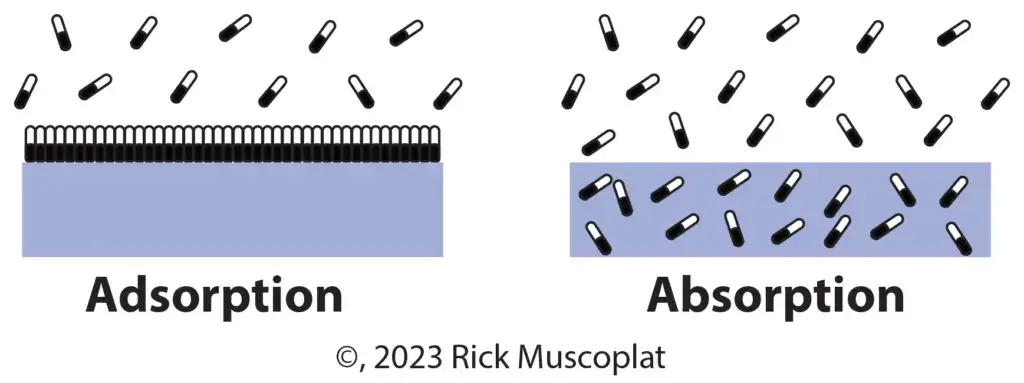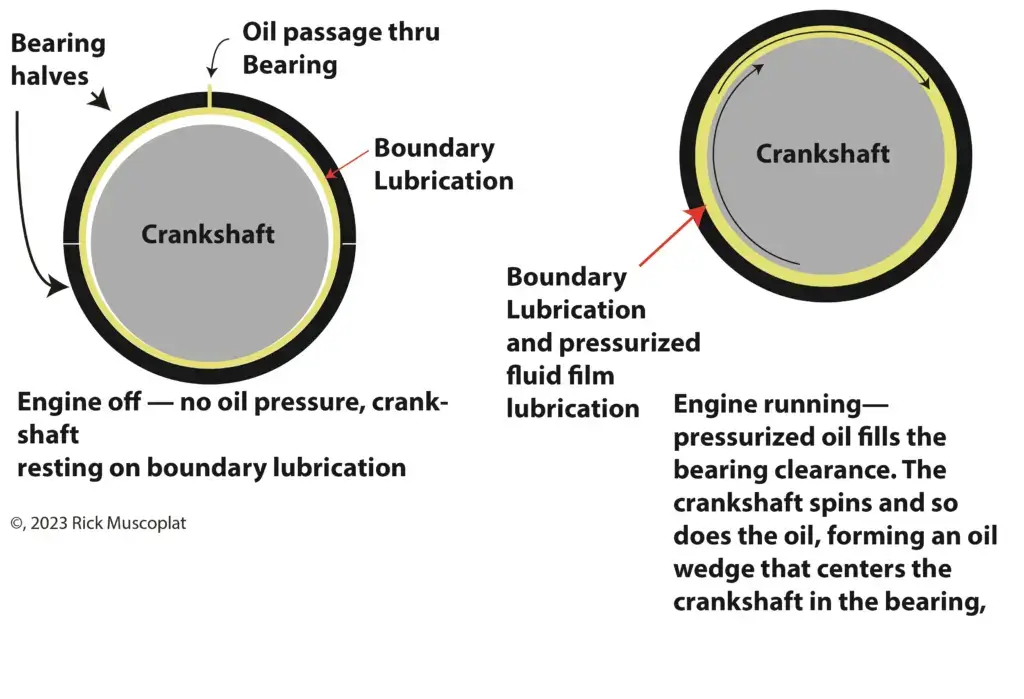Hydrodynamic lubrication versus boundary lubrication
How Hydrodynamic lubrication keeps engine parts from touching versus boundary lubrication
Automotive lubrication systems protect against metal-to-metal contact using both hydrodynamic lubrication and boundary lubrication techniques. The difference between the two can be confusing to DIYers that think that engine lubrication is based more on oil viscosity than pressure.
To understand the difference between hydrodynamic lubrication (also called film lubrication) and boundary lubrication we must first understand the difference between the words absorb and adsorb.
Absorption is a dissolving/combining process — examples of absorption
• When you add cream and sugar to your coffee, it’s absorbed and becomes inseparable from the coffee
• The human digestion process is an example of absorption. The nutrients are broken down and absorbed into your body
• Applying a topical medication to your skin, where it’s absorbed into your body is an example of absorption
Adsorption is a surface attracting process — examples of adsorption
Adsorption is a physical or chemical process where liquid or gas molecules cling to a solid surface but do not dissolve into the solid. In simpler terms, this is like a magnet attracting metallic particles. They cling to the surface of the magnet but don’t become part of it. Or, think of dust on your walls. It clings to your wall, but doesn’t become a part of the wall
A sponge soaking up water is ADsorbtion, not absorption and most people thing
• When you soak up water with a sponge, the water molecules cling to the surface of the sponge cells and fibers. But you can immediately separate the water from the sponge by squeezing it. The water didn’t become part of the sponge material.
• When motor oil molecules cling to the metal surfaces in an engine, it’s adsorption.

Oil molecules cling to metal surfaces to form boundary lubrication. When you add cream and sugar to your coffee, they’re absorbed and become inseparable
What is fluid film hydrodynamic lubrication?
Fluid film or hydrodynamic lubrication occurs when the engine is running and pressurized oil circulates throughout the camshaft, crankshaft and rod bearings. The pressurized oil spins with the rotating components, forming an oil wedge that centers the shafts and prevents them from touching. The oil film also provides lubrication, removes heat and cushions the rotating shafts.
Graphic illustration of boundary lubrication and fluid film lubrication

On the left you see fluid film lubrication (hydrodynamic) caused when your oil pan has enough oil and the oil pump is circulating the oil at pressure. On the right you see what happens when you run out of oil with the engine running. There’s no longer any pressure to separate the parts so the two parts run on boundary lubrication. Well, for a while at least. Once the boundary lubrication is gone, you get full metal-to-metal contact and liquefied metal
As long as the oil is pump-able in cold weather, it can provide hydrodynamic lubrication
Very cold oil doesn’t pour well in cold weather. But gravity flow is Kinematic viscosity. Engines don’t rely of gravity flow lubrication systems; they rely on an oil pump to move oil. An oil’s pump-ability to pump cold oil is not the same as the oil’s viscosity.
Most modern vehicles can pump enough oil volume at cold temperatures to produce enough oil flow to fill bearing clearances so hydrodynamic lubrication can occur.
Oil pressure drops and high engine loads can result in boundary lubrication
If the engine experiences a drop in oil pressure due to low oil levels, oil pump failure, or oil starvation due to clogged oil passages, the metal parts can lose fluid film lubrication and be separated by boundary lubrication only; those few oil molecules that cling to the metal surfaces by adsorption. Operating at high loads with out boundary lubrication can eliminate oil cling and result in full metal-to-metal contact.
In addition, high engine loads and knock can exceed fluid film strength, squeezing the fluid film out of the clearances, resulting in boundary lubrication and the possibility of metal-to-metal contact.
The motor oil viscosity myth
An oil’s viscosity determines the strength of the fluid film. But oil viscosity doesn’t correlate to the oil’s boundary lubrication qualities. That is determined by the oil’s adsorption (clinging) properties.
©, 2023 Rick Muscoplat
Posted on by Rick Muscoplat

